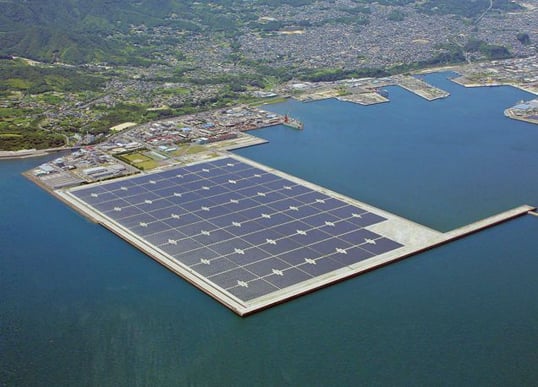
TEPCO, one of Japan’s national utilities and grid operators, will roll out home solar-plus-storage systems for its customers as part of a drive to create a renewable energy retail business.
Tokyo Electric Power Holdings, to give the company its full name, launched ‘TRENDE’, a retailing operation where smartphones or other online devices can be used to switch to the service. Although TEPCO said the primary reasons for creating the plans include allowing customers the peace of mind to know that a significant portion of their power is coming from solar PV, although the company did not mention figures for the intended balance of its generation mix.
Enjoy 12 months of exclusive analysis
- Regular insight and analysis of the industry’s biggest developments
- In-depth interviews with the industry’s leading figures
- Annual digital subscription to the PV Tech Power journal
- Discounts on Solar Media’s portfolio of events, in-person and virtual
The other main reason for starting up the TRENDE plan is that customers can sign up for a flat-rate for their electricity, saving money and insulating them from the rate increases more commonly associated with energy prices linked to fossil fuels or nuclear. While aimed at households, there will also be plans for larger users of energy such as commercial and industrial (C&I) entities, described as a “premium” version of the plan.
Since 2016, Japan’s consumers have been free to procure their electricity from competing suppliers in a newly-liberalised marketplace. Businesses signed up to provide generation, including automotive fuel retailers and mobile phone companies, which came up with novel plans that bundled electricity together with their contracted services or products.
“Before deregulation there were just 10 electric utility companies operating as regional monopolies whereas now there are more than 400 new entrants ranging from gas companies to telcos,” Silvestros Vlachopoulos, an analyst with Delta EE, told Energy-Storage.News.
Capacity and real-time energy exchange markets are expected to open in 2020, increasing the value of demand response and flexibility services, in which storage could play a role, while the government’s goal is to raise renewable energy’s proportion of the energy mix to 24% by 2030, from 15% today, Vlachopoulos said.
Creating a distributed platform
TEPCO recently made an investment in the UK’s Moixa, which not only makes residential-sized batteries, but also provides an aggregation platform, GridShare, which allows Moixa to get paid for selling services to the grid, while paying the household or business which hosts the battery an income for use of the system. The Japanese utility is also hosting trials of energy storage systems made by US commercial provider Stem Inc and Sunverge within its service area, with both companies known for their aggregated ‘virtual power plant’ business models. Trading group Mitsui and the government Ministry of Economy, Trade and Industry (METI) are conducting that trial. TEPCO also recently invested in a US grid-scale energy storage project by RES.
TRENDE’s rollout plan includes the creation of a “distributed energy platform” through offering its customers solar PV-plus-battery energy storage for their homes. TEPCO declined to give further details, although Energy-Storage.News is awaiting response to a request for more information on expected solar PV generation and the home battery plan. Japan also has subsidy schemes in place which cover a portion of the cost, around a third, of home battery systems and is working towards zero energy standards for housing.
Two entrepreneurs have been hired to set up TRENDE, Jeffrey Char and Tadatoshi Senoo, whose track record includes working together to launch Orb, a blockchain startup, in 2014.
“Our easy to use, engaging, and informative platform will help consumers make smart energy choices and save money, while also promoting the use of solar energy,” Tadatoshi Senoo said.
“We are pleased to be working with TEPCO to make residential solar power a reality.”
The launch was announced just a few days after TEPCO president Tomoaki Kobayakawa made an appearance at Japan’s Federation of Electric Power Companies (FEPC) where he set out his vision for the company’s future. Kobayakawa put strong emphasis on the potential of renewables to create cost-effective, sustainable energy networks while also reiterating that TEPCO remains committed to cleaning up the long-lasting effects of failure at the Fukushima Daiichi nuclear plant. In order to meet those obligations and return TEPCO to profitability, the company intends to raise revenues by ¥500 billion (US$4.655 billion) each year.
“Our main mission is guaranteeing the delivery of a stable supply of low-cost electricity customers. Within that mission, nuclear power is not everything. Thermal power, the procurement of renewable energy, and hydropower all play a part,” Kobayakawa said.
Prior to the Fukushima disaster that followed the 2011 tsunami, Japan shuttered its nuclear generation fleet, leading in part to the 2012 introduction of the feed-in tariff policy for solar, the primary beneficiary of which to date has been the utility-scale solar (known as 'megasolar' in Japan) sector.






